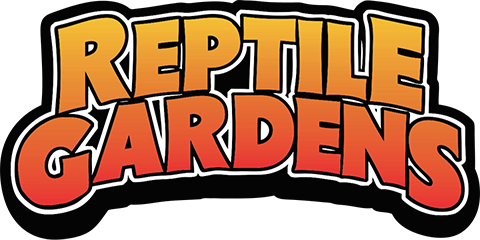Hey, Where's Your Top 10 Most Deadly Snakes List?
For many years we had an immensely popular "Top Ten Most Venomous Snakes" list posted here at the Reptile Gardens and, subsequently, on our web site. Many of you remember this list and have asked about it. We get thousands of web search hits to our site every year looking for just such a list.
We always kept up with current research and would make changes to the list over time that reflected new study results. Of course, no matter how scientifically accurate we made it, as with any Top 10 list of any kind, we got many emails telling us how wrong we were for this or that particular reason. It was a constant balancing act. Whose research is best? What is most current? What anecdotal information, if any, should be factored in?
Recently, Terry, Ken, and I looked at all the research and at all the angles from which this subject could be approached. Upon review it occurred to us that a Top 10 list was no longer relevant, and really never was. The scientific community now recognizes that venoms are far too complex and their effects vary greatly. To make it more complicated, research conducted by a friend of mine showed that the toxicity of the venom of a single snake (a particular individual snake, not snake species) changes day to day, hour by hour.
And finally, there is the issue of semantics, deadly vs dangerous. A snake can have the most powerful venom of any snake on the planet (deadly) but be so rare, rarely seen in the wild, and easy going that it has likely never killed single person in recorded history (that would be the Inland Taipan or Fierce snake). Another snake can have relatively mild venom (for the snake world) yet be quite common, somewhat aggressive, and live where lots of people do, and so kill more people than any other snake species on the planet like the Asiatic cobra (dangerous).
After much discussion, we ultimately decided to throw out any plans for a new Top 10 list. Instead. Terry came up with what we are calling the Danger Quotient. The Danger Quotient takes all the significant factors about a venomous snake species into account: Venom yield, venom toxicity, fang length, disposition (how does the species behave), and size of the adult snake.
We know this will annoy some folks because it is more convoluted than a simple Top 10 list, and therefore, will take more effort and reading to determine the winner of a bar bet. But, the whole subject is, honestly, extremely convoluted. We feel our Danger Quotient more accurately reflects reality. As you have likely figured out from our past posts, we are all about accuracy.
We first created a Regional Danger Quotient list which compares those above listed factors for the top deadly snakes in each of 5 specific world regions: Africa, Asia, North America, South America, and Australia/New Guinea. However, once that was completed and on our web site, a study of our web site hits showed us we might not be answering people's questions to their satisfaction or quick enough for them. We still weren't ready to resort to a Top 10 list though.
In order to better address people's questions, we decided to change how we presented the list and develop another companion list: the International Danger Quotient. This list compiles all the snakes on the regional lists into one big list. For this one we added one more category: a rating for number of bites per year. In order to be as accurate as possible, we started over and created this list independently of the Regional Danger Quotients. Our new list resulted in some very interesting placement. Some snakes have high scores for their region but when put into the world mix they drop dramatically.
Once you peruse our lists and read a little of the information we provide, you may see why it is so hard to come up with something specific and concrete like a Top 10 list. There are too many variables, too many opinions, too many research papers. We know there are several other competing lists out there but keep in mind that our new lists are based purely on a pile of recent scientific data and the combined 120 years of experience among the three of us who made this list. We know we will still get emails telling us we are incredibly stupid and how wrong we are about a particular snake. We promise, we will stay current on available data and will research your suggestions so that we can keep our Danger Quotients as accurate and up to date as possible.
Now, that said, we know you would still like a simple Top 10 list. It would be much easier for answering those bar bets or writing a term paper. We have given you a nice, easy to decipher chart that lays it all out almost as simply as a Top 10 list. We do encourage you to dig deeper and visit the pages with the full facts about each species. And think of it this way, you can sound a whole lot more knowledgeable after you read our Danger Quotient lists that you would with a mere Top 10 list.





